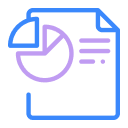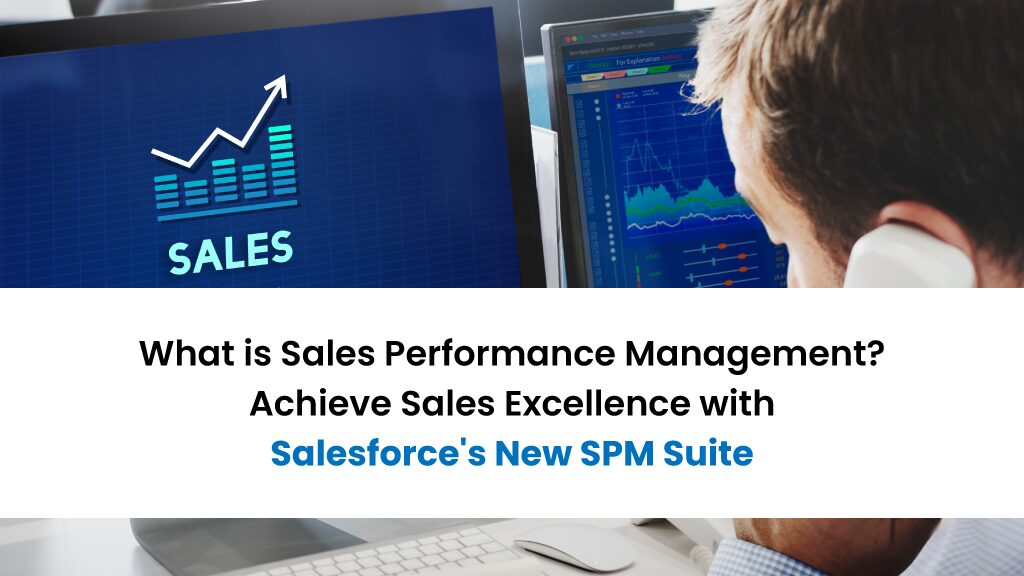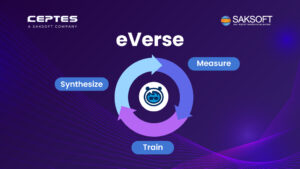Sales leaders, rejoice! Salesforce has just rolled out its powerful Sales Performance Management (SPM) Suite, and it’s here to revolutionize how you plan, manage, and execute sales strategies. If you’ve ever felt the pain of manual processes, disjointed planning, or misaligned territories, the SPM Suite is about to become your new best friend.
Built seamlessly into Salesforce CRM, this game-changing solution enables organizations to align targets, optimize territories, automate incentive compensation, and much more—all with a customer-centric approach. Let’s dive into what makes this suite a must-have for every sales organization.
What is Sales Performance Management?
Sales Performance Management (SPM) is a process that helps organizations to stay on top of their sales game by tracking, managing, and improving how their teams perform. SPM covers various aspects of sales, such as tracking sales activities, managing quotas and planning incentives.
In fact, companies using SPM can monitor sales KPIs like how quickly their reps close deals or how well they meet their quotas. With this data, leaders can identify areas where reps need coaching or where workflows can be optimized. During the pandemic, many companies had to adopt new technologies overnight to keep up with sudden changes. Those who already had digital tools in place, like SPM, had a smoother transition.
Importance Of Sales Performance Management
The Sales department is like a high-performance sports team—each player has a role, and together, they work toward winning the game. But without a solid game plan and a coach monitoring the progress, victory can slip through fingers. That’s where Sales Performance Management (SPM) comes in.
Inefficiencies like unclear targets, imbalanced territories, and manual processes often throttle performance. SPM Suite eliminates these roadblocks with its integrated tools for planning, execution, and motivation—all in one place. It helps organizations connect data, teams, and strategies, empowering everyone to sell smarter, faster, and with greater alignment.
How Sales Performance Management Can Help?
According to Salesforce’s State of Sales Report, Sales reps spend 70% of their time in non-selling tasks. Even with technology advancements – activities like prioritizing leads, entering data, and generating quotes could be streamlined through automation.
For tasks that can’t yet be fully automated, such as training and planning, the focus shifts to making them more efficient and impactful. By minimizing the time spent on these activities, sales reps can dedicate more energy to what truly matters—selling. A well-thought-out Sales Performance Management (SPM) strategy can help achieve this by driving smarter decisions and streamlining processes. Here’s how:
1. Fine-Tune Sales Forecasts
Accurate forecasts are essential for resource planning and meeting revenue goals. With SPM tools, companies can regularly analyze past sales trends and patterns to refine predictions. For example, a retail business might notice that certain products sell faster during the holiday season. Using this data, they can allocate inventory and manpower more effectively, ensuring they’re ready to meet demand without overstocking.2. Align Sales Strategies with KPIs
Sales Performance Management tools enable sales leaders to measure key metrics like conversion rates, customer satisfaction, and churn rates to gain a clearer picture of sales performance. For instance, a company could use this data to identify the pain points of the sales team and develop strategies to address the weaker areas to improve the overall sales efficiency and performance.3. Optimize Sales Processes
Data insights from SPM can highlight which steps in the sales process are time-consuming or ineffective. For example, a healthcare solutions provider might realize that reps spend too much time on manual contract creation. By introducing automated workflows for contract generation, they save hours each week, allowing reps to focus on closing deals. Additionally, identifying knowledge gaps can lead to targeted coaching sessions, ensuring reps are well-prepared to address customer concerns.Core Components of Sales Performance Management:
The magic of the SPM Suite lies in its ability to unite revenue leaders, operations, finance, and sales teams. By bringing everything under one roof, the suite fosters collaboration, alignment, and data-driven decision-making.
1. Sales Planning:
A sales plan provides reps with a clear understanding of company objectives and a roadmap to achieve them. It typically outlines key elements like target customers, potential challenges, and revenue goals, ensuring everyone is aligned and focused. With tailored templates, customizable plans and centralised plan library – it helps the sales team to start the planning process quickly. With territory planning, empower your sales team to align with the territories and customers they’re best suited to and craft the strategy to close more deals based on market trends, sales forecast and more.
For instance, let’s say your goal is to boost new customer acquisition in a specific territory. Your plan could include refreshing lead nurturing campaigns, forming strategic partnerships in the region, offering targeted promotions, or hosting local events to generate leads. By tailoring your approach to the needs of the territory, you give your team the tools they need to succeed.
2. Salesforce SPIFF:
Keeping sales reps motivated is essential for driving performance, and one of the most effective ways to do this is through well-designed commission structures and bonuses. When your team needs an extra push to hit specific goals or meet quotas, incentive compensation plans—like SPIFFs (Sales Performance Incentive Funds)—can be a game-changer. This provides sellers a real-time visibility into the incentives on a single, integrated platform. It also automates commission calculations, reduces administrative overhead while improving departmental alignment.
Quota management is also a crucial part of SPM. It involves setting, monitoring, and achieving sales goals within a defined period. To be effective, quotas need to be realistic, data-driven, and aligned with broader company objectives. A well-managed quota system not only keeps reps focused and motivated but also ensures fair recognition and rewards for their achievements.
3. Salesforce Maps:
Boost sales efficiency with Salesforce Maps, a powerful CRM-based sales mapping solution designed to enhance prospecting and field sales operations. With Location Intelligence, see customer data in context of location — not in rows and columns – identify opportunities and prioritize prospects with greater accuracy. Build a smarter field sales strategy using your CRM data, make quick adjustments to your sales strategy and uncover new opportunities with built-in prospecting features. Optimize time in the field by reducing drive time with smart routes, accessing actionable recommendations and capturing field notes on the go.
Revenue Intelligence:
Accelerate deal closures and enhance revenue performance with Salesforce Revenue Intelligence, seamlessly integrated into Sales Cloud. Gain a holistic view of your sales pipeline, accurate forecasting, and individual rep performance — all accessible from a single, customizable dashboard. Analyze revenue in detail with powerful, embedded analytics native to Sales Cloud. Seamlessly integrate and sync data from third-party systems with 50+ native connectors, blending external data with Salesforce for a comprehensive view of sales performance.
Conclusion:
The Salesforce SPM Suite is a comprehensive solution designed to align your people, processes, and data for peak sales performance. Whether you’re a small business looking to scale or an enterprise aiming to fine-tune your strategy, the SPM Suite has something for everyone.
Though building a robust SPM plan requires time and effort, it’s an investment that ensures your team stays aligned, competitive, and primed to achieve ambitious targets. With the right strategy, tools, and commitment, your organization can not only meet its goals but also thrive in an ever-evolving sales landscape.
FAQ:
1. How does Salesforce SPM Suite improve collaboration among teams?
2. Can Salesforce SPM Suite integrate with other tools and systems we’re currently using?
3. What role does AI play in Salesforce Sales Performance Management?
4. Is the Salesforce SPM Suite suitable for small businesses, or is it better for enterprises?
Salesforce SPM Suite is designed to cater to businesses of all sizes. Small businesses can use it to establish efficient sales processes and scale effectively, while enterprises can leverage its advanced features to optimize complex operations and improve sales performance at scale. For detailed pricing, click here.
To get more guidance on streamlining your sales process, boosting team alignment, and driving results with Salesforce Sales Cloud, contact us.

Nilamani Das
Nilamani is a thought leader who champions the integration of AI, Data, CRM and Trust to craft impactful marketing strategies. He carries 25+ years of expertise in the technology industry with expertise in Go-to-Market Strategy, Marketing, Digital Transformation, Vision Development and Business Innovation.


















